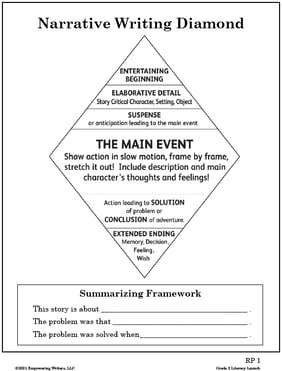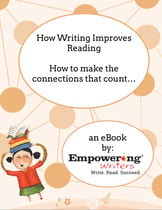In order for students to respond effectively to 21st century literary analysis tasks and response to text challenges, we must use every reading experience as an opportunity for close reading, and assist them in deconstructing texts to glean deeper meaning. Here are five tips that will help make every reading experience a pre-writing experience, and vice versa.
1) Establish a strong reading writing connection – use every reading opportunity to see the text through “author’s eyes.” Look at the text in terms of author’s purpose (is it narrative – written to entertain, or expository/informative – written to inform)? Note the way the genre and purpose dictate organizational structure.
 2) Introduce the salient features of each genre, and pinpoint these in the texts students read:
2) Introduce the salient features of each genre, and pinpoint these in the texts students read:
Narrative skills and features:
- A character, setting, problem or adventure
- Expository/Informative skills and features:
- Entertaining beginning
- Elaborative detail
- Suspense
- Fully elaborated main event
- Satisfying ending
Informational skills and features:
- Introduction (lead and topic sentence)
- Main Ideas (in each body paragraph)
- Supporting details
- Research based evidence
- Conclusion
 3) Teach students to recognize and use text conventions to enhance meaning:
3) Teach students to recognize and use text conventions to enhance meaning:
- The title – in narrative stories the title usually includes the main character’s name and/or a suggestion of a story problem. In expository writing the title generally states the topic.
- Are there headings in the text? Headings are found in expository texts to indicate the main ideas in the piece.
- Italicized and boldfaced words – these indicate key words in expository texts
- Photographs, charts, graphs – provide at-a-glance information.
- Illustrations – generally found in narrative stories to enhance the text.
 Download "How Writing Improves Reading" eBook
Download "How Writing Improves Reading" eBook
4) Deconstruct text through Annotation:
Project the text for the class and provide a clean copy for each student. Explain that you’ll be “text detectives,” marking in all of the salient features that indicate genre. Read it aloud with students following along. Then, as you identify and write in all the key features, students do the same. Write notes in the margins, underline or circle key words. Name all of the features and skills that indicate genre.
5) Ask pointed Guiding Questions and provide sentence starters or sentence stems to not only frame their written responses, but to shape their thinking.
Ex. The author illustrates this by__________.
This is evidenced by___________.
In paragraph (1, 2, etc) we see this when_______.
For more information on this topic, download our free ebook titled: How Writing Improves Reading: Making Connections that Count.